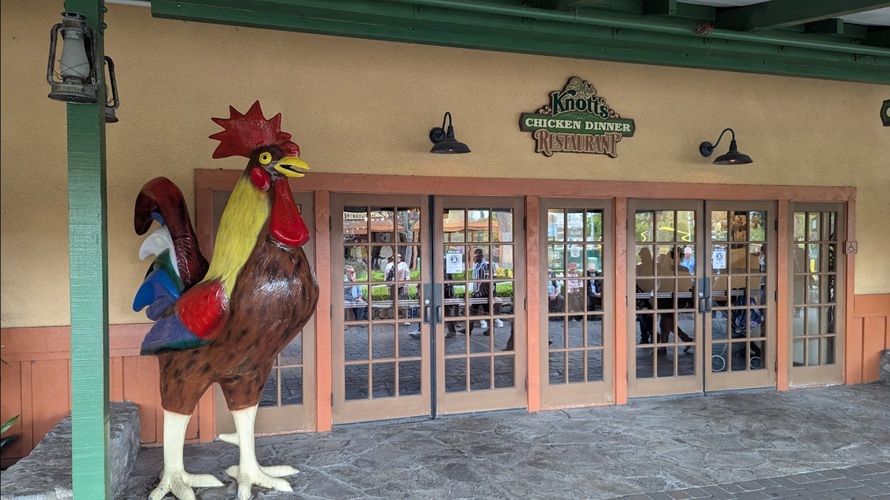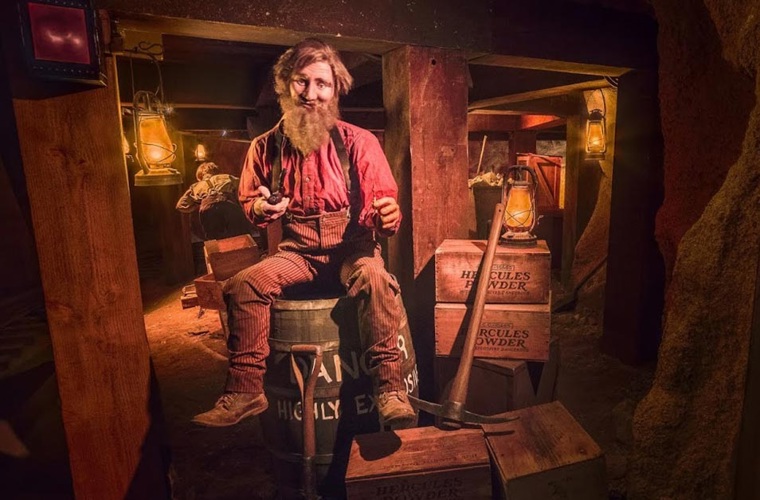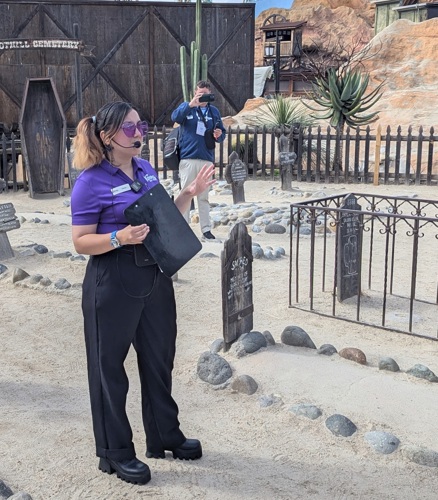13 Secrets of Knott’s Berry Farm: History, Heritage and Haunt
Knott’s Berry Farm is widely considered to be America’s first theme park, evolving out of the need to keep guests busy as they awaited entry into Mrs. Knott’s Chicken Dinner Restaurant. I recently had a chance to get a detailed tour of Knott’s Berry Farm as a part of the 2025 IAAPA North American Summit. While I grew up in Southern California and have been to Knott’s Berry Farm more than 25 times, I still managed to learn quite a bit on the tour. Here are some of the highlights:
1) Historic Carousel with Hershey Roots
The park’s classic 1902 Dentzel Menagerie Carousel originally operated at Hersheypark from 1902 to1936 before moving to Knott’s in 1955. It features 48 hand-carved animals (including zebras, ostriches, and a lion).
2) Fiesta Village’s Hidden History
The vibrant Fiesta Village area was built in 1969 to celebrate California’s Spanish heritage, replacing a former "Seal Pool" attraction where live sea lions (not seals) once entertained guests during the park’s early years
3) National Treasure’s Independence Hall Replica
The 1966 brick-for-brick replica of Philadelphia’s Independence Hall at Knott’s is currently used for educational tours, but was also used for filming interior scenes in National Treasure (2004), including Nicolas Cage’s dramatic heist sequence.
4) Snoopy’s Ice Rink Origin Story
Knott’s became the first park to license Peanuts characters in 1983. It started with a meeting between Knotts and Peanuts creator Charles Schulz. Schulz agreed to allow Knotts to do Snoopy on Ice as long as his daughter was allowed to be in the show.
5) “Random" Carnival Rides with Cultural Intent
While the rides in Knotts’ Fiesta Village appear to be basic flat rides, they actually reflect the rides found in Mexico’s traditional ferias (festivals).
6) Alebrijes Sculpture Garden Inspiration
The sculptures in Fiesta Village are connected to the artist Pedro Linares who said his inspiration came from hallucinations he had while very ill in 1943. While he was in bed unconscious, he dreamt of trees, rocks, and clouds that transformed into strange animals
7) Authentic Mercado in Fiesta Village
The Olvera Street-inspired marketplace features handcrafted goods from Mexican artisans, maintaining cultural authenticity since its 1969 debut. In fact, only authentic items and items featuring Fiesta Village are sold there.
8) Pioneering Dark Rides
The Calico Mine Ride (1960) and Timber Mountain Log Ride (1969) were Knott’s Berry Farm’s first two dark rides and both remain to this day.
9) Stagecoach: The Original Thrill Ride
Introduced in the 1940s, the horse-drawn stagecoach is considered Knott’s first official ride and is also still operational today.
10) Ghost Town’s Salvaged Buildings
Walter Knott collected abandoned 19th-century structures from Western ghost towns. Many of these buildings (and some replicas) can be found in Knott’s Ghost Town area.
11) Boot Hill’s Real Epitaphs
The humorous gravestone inscriptions in Ghost Town were inspired by actual epitaphs Walter encountered during his travels through mining communities.
12) The Historic Schoolhouse
The original Calico Schoolhouse, purchased by Walter Knott for $253.50, was relocated to Knott's Berry Farm and remains a part of the park's Ghost Town area. This 1880s schoolhouse served its original purpose once again when Knott's grandchildren and children of park employees attended classes there in the 1950s. Today, it is included in the Early California Tour, offering visitors a glimpse into the region's educational past.
13) In-House Carpenters: Seasonal Artisans of Terror
Knott’s Scary Farm employs a dedicated team of 40 carpenters who transform the park into a Halloween spectacle each fall. While the core team works year-round on park maintenance, the seasonal surge in staff focuses exclusively on designing and constructing intricate mazes, scare zones, and atmospheric sets for the world famous (and first of its kind) event.







